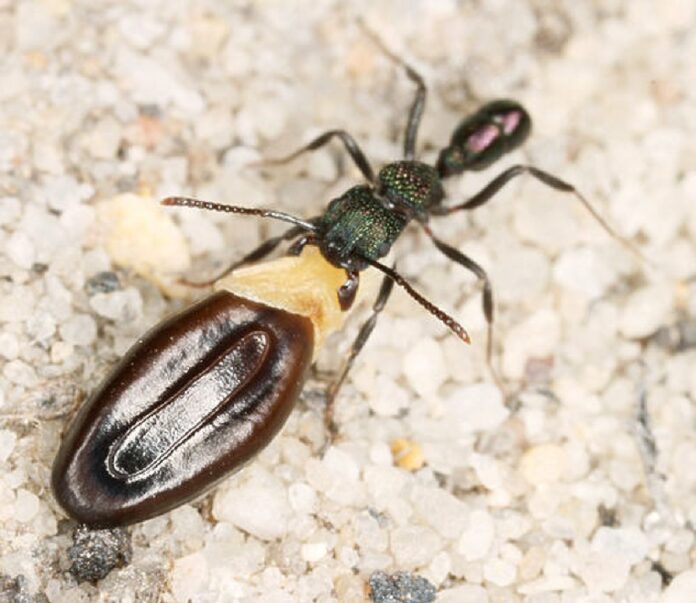By LESLIE BISHOP, guest columnist
The movement to collect and save the seeds of food plants to help conserve and improve agricultural biodiversity may find inspiration from the insect world.
Many species of ants are highly effective seed collectors and play a vital role in the ecology and biodiversity of our deciduous forests.
Worldwide, more than 11,000 flowering plant species depend on ants for seed dispersal.
In our deciduous forests, 40 percent of the herbaceous plants depend on ant dispersal of seeds, known as myrmecochory.
[sc:text-divider text-divider-title=”Story continues below gallery” ]Scientists often refer to ants as “ecosystem engineers” because their activities have profound effects on the occurrence and distribution of plants.
A recent study in New England shed light on the disappearance of many species of wildflowers. The forest had been sprayed with pesticide in an attempt to control gypsy moth caterpillars that were devastating the trees. But the pesticide also killed the ants. And in the absence of ants, the wildflowers disappeared.
Plants dispersed by ants produce seeds that have fleshy appendages called elaiosome. These fleshy appendages attract the ants, and the ants carry them back to their underground nests.
Safely underground, the ants remove the elaiosome and feed them to their larvae. The elaiosomes are rich in lipids, proteins, carbohydrates and vitamins that are crucial to the healthy development of the young.
The ants toss the remaining seed into a rubbish heap, or midden. The discarded seeds are still able to germinate and grow.
In any plant-animal relationship that is mutually beneficial, there must be advantages to both parties. The ants benefit by the provision of nutritious baby food.
How do the plants benefit? Not only are seeds successfully dispersed from their parent plant, but they also have improved survivorship. In the ant nest, they are well hidden from seed predators like mice and other rodents.
They also benefit from the microclimate of the ant nest. Compared to the surrounding soil, ant nests provide more nutrients, higher soil aeration and higher soil moisture for successful seed germination.
In addition, a recent master’s thesis at the University of Rochester found that ants secrete anti-microbial compounds that inhibit the growth of pathogenic fungi.
Quite a good deal for both parties!
Some plants, however, have evolved ways to take advantage of the ants. A recent study at the University of Ulm in Germany found that some plants produce seeds that mimic the chemical olfactory cues of elaisomes. The seeds of these “cheaters” are collected and stored, without providing the nutritious benefit to ants.
Ants find seeds using chemical cues. Their antennae have four to five times more odor receptors than most other insects. A 2012 study at Vanderbilt University found that ants have 400 distinct odor receptors (in comparison, a honeybee has 174).
Chemical communication plays an important role in the complex social behavior in ant colonies. Ants can alert each other to danger and communicate about food sources through specific chemical signals. They also can detect the presence and location of food sources by odor — and seed elaisomes are no exception.
In our deciduous forests, with primarily beech-maple and oak-hickory communities, spring wildflowers flourish in March and April before the tall trees leaf out and shade the understory.
These early bloomers, called spring ephemerals, must complete their growth, flower, reproduce and set seed before the canopy fills in with leaves.
Not only is the timing of their life cycle complicated by the need for insects to carry pollen from one flower to another, but also for their seeds to mature in synchrony with early season ant foraging.
Our spring wildflowers like Trillium, Dutchman’s Breeches, Spring Beauty and Trout Lily are all dependent on ants to collect and disperse their seeds.
As you walk our beautiful Brown County forests this spring, notice the diversity of wildflowers and remember the role of nature’s seed collectors — the diligent ants.
Leslie Bishop is a Brown County resident and retired biology professor from Earlham College. She is a volunteer interpretive naturalist at Brown County State Park. She can be reached through the newspaper at [email protected].




